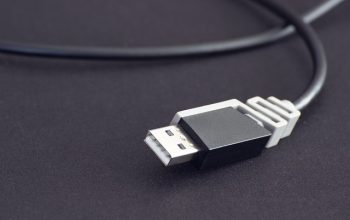Navigating the vehicle title transfer process can be a maze of paperwork and state-specific regulations. For novice buyers particularly, understanding and adhering to the DMV title transfer requirements is crucial for a seamless transition of ownership. This article demystifies the steps involved in transferring a car title, highlighting the variations in title transfer fees and costs across different states. We’ll provide a clear and concise guide, including a DMV title transfer checklist to streamline the process post-purchase. Whether you’re buying your first car or adding a new vehicle to your collection, this comprehensive resource will ensure you complete the necessary steps confidently and efficiently.
- Navigating the Vehicle Title Transfer Process: A Step-by-Step Guide
- Comprehensive DMV Title Transfer Requirements Across States
- Decoding Title Transfer Fees and Costs: Variations by Location
- Streamlining the Transfer with a DMV Title Transfer Checklist
- Essential Steps for a Smooth Title Transfer After Car Purchase
Navigating the Vehicle Title Transfer Process: A Step-by-Step Guide

Navigating the vehicle title transfer process can be streamlined with careful planning and understanding of the DMV title transfer requirements specific to your state. Upon purchasing a vehicle, whether new or used, it’s imperative to initiate the transfer promptly to comply with legal regulations and avoid any disruptions in registration or insurance coverage. The first step typically involves filling out the appropriate forms provided by your state’s Department of Motor Vehicles (DMV). These forms serve as a legal document transferring ownership from the seller to the buyer. It’s crucial to obtain all necessary paperwork, including the signed title, proof of vehicle purchase price, and identification. Additionally, you must be aware of the title transfer fees and costs associated with the process, which can vary significantly from state to state. These may include title application fees, transfer taxes, and registration fees. To expedite the process, gather all documents beforehand and ensure they are accurately completed. Once all paperwork is in order, submit it to your local DMV office or online portal if available. The DMV will then review your submission, perform a title search to confirm the vehicle’s current ownership status, and, upon approval, issue a new title in your name. It’s advisable to follow the DMV title transfer checklist provided by your state to ensure all steps are completed without delay. By staying informed about the specific requirements and prepared with the necessary documentation, transferring a car title after a car purchase can be accomplished efficiently, allowing you to legally operate your new vehicle with minimal inconvenience.
Comprehensive DMV Title Transfer Requirements Across States

When navigating the vehicle title transfer process, understanding the comprehensive DMV title transfer requirements across states is crucial for a seamless transaction. Each state’s Department of Motor Vehicles (DMV) has its own set of regulations, forms, and fees associated with transferring vehicle titles. The process typically involves submitting the correct application form, providing proof of ownership such as the existing title or sale documents, and verifying the identity of both the seller and buyer through valid identification. Additionally, residents must ensure their vehicle complies with state-specific emissions tests and safety inspections before a title transfer can be completed.
Title transfer fees and costs are determined by individual states and can vary significantly. These fees often include a transfer tax or use tax based on the vehicle’s value, a registration fee, and possibly a titling fee. To simplify this process, it is advisable to consult the DMV title transfer requirements specific to your state of residence. A comprehensive checklist, which includes all necessary documentation, can serve as an invaluable resource for both first-time buyers and those familiar with vehicle ownership transfers. This checklist should outline steps such as completing the transfer transaction within a set timeframe after car purchase to avoid penalties or delays, as well as providing proof of insurance, odometer disclosure, and any lienholder information if applicable. By understanding and adhering to these requirements, vehicle owners can ensure a smooth transition of ownership and maintain compliance with state laws.
Decoding Title Transfer Fees and Costs: Variations by Location

The vehicle title transfer process is a critical step following the purchase of a car, and understanding the DMV title transfer requirements is essential for a seamless transaction. Title transfer fees and costs are subject to variation depending on the state in which you reside. These fees can encompass a range of charges, including transfer taxes, registration fees, and titling fees, each with its own regulations and amounts. It’s crucial for vehicle owners to be aware that what may be a minimal fee in one state could be significantly higher in another. For example, some states might waive certain fees for veteran car buyers or have different rates for vehicles of varying classes. Prospective titleholders should consult their local DMV’s guidelines and checklists to decipher these costs and avoid any potential penalties or delays that can arise from misunderstandings or oversights in the process. Knowing the specific title transfer fees and costs beforehand allows for better financial planning during the car ownership transition, ensuring compliance with state laws and facilitating a smoother vehicle title transfer experience.
Streamlining the Transfer with a DMV Title Transfer Checklist

navigating the vehicle title transfer process can be a daunting task for many individuals, particularly those who are new to buying and registering vehicles. The DMV title transfer requirements vary significantly from state to state, which means that what works in one jurisdiction may not apply in another. To ensure a smooth transition of vehicle ownership, it is crucial to prepare all necessary documentation and understand the associated title transfer fees and costs ahead of time. A well-organized DMV title transfer checklist serves as an invaluable resource, guiding you through each step of the process. This checklist typically includes items such as the completed application form for title transfer, proof of ownership, a bill of sale, odometer disclosure statement, and the relevant fees, which can vary widely based on your location. By having this information at your fingertips, you can avoid common pitfalls and complete the transfer efficiently. Additionally, familiarizing yourself with how to transfer a car title after a purchase will help you comply with local regulations and avoid potential penalties or delays. Using a checklist ensures that no critical steps are overlooked, making the entire process more transparent and less intimidating. Whether you’re buying a used vehicle from a private seller or dealing with a dealership, having a streamlined approach to the title transfer formalities will save you time and reduce stress. Remember to verify the specific requirements for your state’s DMV to ensure a hassle-free vehicle title transfer.
Essential Steps for a Smooth Title Transfer After Car Purchase

To navigate the vehicle title transfer process post-purchase smoothly, it’s crucial to be well-versed with the DMV title transfer requirements specific to your state. The initial step involves promptly notifying the relevant Department of Motor Vehicles (DMV) of your new ownership status. This typically requires completing a title transfer application form, which is often available on the DMV’s website or at their local office. Ensure you have the previous owner’s information, including their name and title, odometer reading, and any lienholder details if applicable. The title transfer fees and costs are determined by each state, so be prepared to pay the necessary amount as part of this process. These fees can vary significantly, so it’s advisable to check your state’s DMV fee schedule beforehand to avoid any surprises.
Once the application is submitted, the DMV will conduct a vehicle identification number (VIN) inspection if the transfer involves a used car. This step is non-negotiable as it ensures that the title being transferred is legitimate and that there are no outstanding loans or issues associated with the vehicle. After this, you’ll receive a new registration and title in your name, legally completing the transfer process. To expedite the title transfer after car purchase, consider utilizing online services where available, as they often provide faster processing times. Additionally, gather all necessary documentation—such as proof of insurance, a bill of sale, and identification—beforehand to prevent any holdups in the process. By following these steps and preparing all required paperwork in advance, you can facilitate a swift and efficient vehicle title transfer process.
Navigating the vehicle title transfer process can be a daunting task for new car owners. However, with clear guidance and the right resources, it is an achievable endeavor. This article has outlined the key steps, varying requirements by state, and the associated fees to consider during a DMV title transfer. Utilizing a comprehensive checklist tailored for your location can streamline this process, ensuring a timely and compliant title transfer after car purchase. By understanding the vehicle title transfer process and preparing in advance with our suggested checklist, you can confidently complete the necessary steps and enjoy your new vehicle without unnecessary delays or penalties. Remember, patience and diligence are your allies when dealing with DMV title transfer requirements across states.



